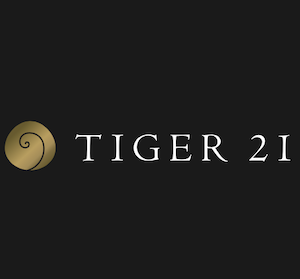Towards the end of 2015, Global Macro and CTAs experienced mixed fortunes. During November they were able to make returns amidst difficult market conditions. For both strategies, strong tailwinds in FX proved to be beneficial, the Lyxor Global Macro Index gaining 1.3 per cent mid-way through November and ending the year up +3.9 per cent. These gains were largely in response to the buoyancy of the USD against G10 and Emerging Market currencies.
In short, both strategies were trading on the expectations of a US Federal Reserve rate hike, which duly materialised in December.
As the Wall Street Journal wrote on 6 November, strong US employment data, coupled with the expected Fed rate hike, pushed the USD to its highest level in almost 13 years.
The US Labor Department said that the economy added 271,000 jobs in October, exceeding expectations for a 180,000 rise. This followed an additional 137,000 jobs created in September.
Associated with the appreciation of the USD, particularly against the Euro, the sharp fall in commodity prices was also broadly supportive for both strategies, although global macro funds were less directional on the asset class than CTAs.
This led Lyxor to reaffirm its overweight stance on both strategies.
At the time, this was further bolstered by the fact that Japanese equities rallied in November, the Nikkei 225 gaining approximately 5.5 per cent through the month.
But things soon changed in December. The gains that global macro and CTAs had enjoyed in November were replaced by losses of 1.2 per cent and 1.5 per cent respectively. There were various contributing factors to this, chief among them the trend reversal on the EUR/USD trade that had worked so well the previous month, as EURUSD climbed from 1.056 to 1.093 at the end of the year.
Long positions on bonds and equities further impacted global macro funds, whilst CTAs were able to slightly offset some of their losses by maintaining short exposure to energy. In addition, short agricultural and base metals contracts turned profitable as the whole asset class suffered another backdrop.
At the time of writing, China’s stock markets have started 2016 in rather inauspicious fashion. Chinese shares fell by 7 per cent, prompting a suspension of trading, as investors continue to panic over China’s manufacturing numbers; manufacturing data contracted for the tenth straight month.
This has, naturally, impacted the yuan, which has weakened against the greenback to 6.53. This is the first time it has broken the 6.5 level in more than 50 months. This will likely prove to be a profitable trade for global macro and CTAs. Indeed, the global economy is now in the grip of dispersive monetary policy.
If the USD continues to strengthen, EM currencies will lag, and most likely the euro as it continues with loose monetary policy to encourage growth. Quite how China will deal with its shift from an export-driven economy to a more service-focused import economy remains to be seen, suffice to say that both global macro and CTAs should have plenty of opportunities to make 2016 a profitable year.
With central banks trying to be more predictable and macro managers actively playing the monetary policy divergence between Europe and the US in FX, Philippe Ferreira, chief strategist at Lyxor Asset Management, believes there is room for macro managers to perform well.
“We are reiterating our overweight stance on global macro managers, with a preference for relative value/ diversified funds compared to directional/ concentrated managers,” Ferreira tells Hedgeweek.
Over the past two years, markets have been regularly shaken by the perspective the Fed will exit its unprecedented accommodative monetary policy. The taper tantrum in 2013 is a good example. Undoubtedly there are risks that the Fed will struggle to keep markets afloat.
“If such risks do materialise, they would turn out to be opportunities. Managers remain cautious ahead of this crucial period. Leverage has decreased, in particular amongst US L/S Equity managers. On the contrary, directionality in FX remains high (short EUR vs USD) by CTA and macro managers, highlighting the conviction that the USD appreciation trend has legs,” says Ferreira.
Interestingly, the fixed income asset class is increasingly being approached on a relative value basis.
CTAs have started to reduce significantly their long exposure to the asset class while global macro managers have been implementing relative value trades along the yield curve and across regions (Europe vs US) for some time, according to Ferreira.
Asked how he assesses hedge fund performance in 2015, Ferreira responds:
“Hedge funds in 2015 faced adverse market conditions. The bond sell off in April in Europe was just a foretaste. The equity selloff in the US in August contributed to dent gains. The Lyxor Hedge Fund Index is flat. Equity Long Short and Global Macro funds fared better than Event Driven and L/S Credit. There are some Equity Long Short funds, for example, up 15 to 20 per cent. Meanwhile activists suffered, down 10 per cent in some cases.”
Looking ahead for 2016, Ferreira says that Lyxor prefers strategies with limited market beta, such as relative value macro strategies or risk arbitrage.
“With the Fed engaged in the tightening cycle, fixed income arbitrage can take advantage of dislocations across the yield curve,” says Ferreira in conclusion.
Relative value strategies that can exploit price inefficiencies in this divergent marketplace, and Global Macro and CTA strategies that are able to continue to trade tactically in response to FX tailwinds, are likely to fare well in 2016.







